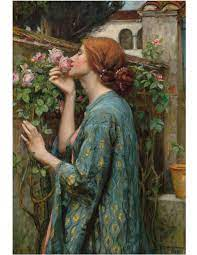mongolian 20th century
O.Tsevegjav, Stallion Fight, 1958 As of now the oil painting is located M ongolian National Modern Art Gallery. I also read there are plans to turn it into a statue. The recreation of this painting will be turned into a statue in Dornod Province, and it was set in motion by the Dornod Youth Federation in Ulaanbaatar. Tsevegjav is a 20th-century Mongolian painter of Stallion Fight. I haven't seen many or any horse fighting paintings that have truly stuck out to me. This painting caught my eye immediately. The way the two stallions in the middle of the painting are intertwined just has such a distinct movement. In my head, I can picture this fight beyond what's happening on the canvas. The brown horse is being slammed to the ground by the chestnut stallion. I can see the whites surrounding the dark brown horse's eyes as they whinny all the way to the green grass. I can feel the wind rushing by as the horses on the left flee the scene and run off the cavus. There

